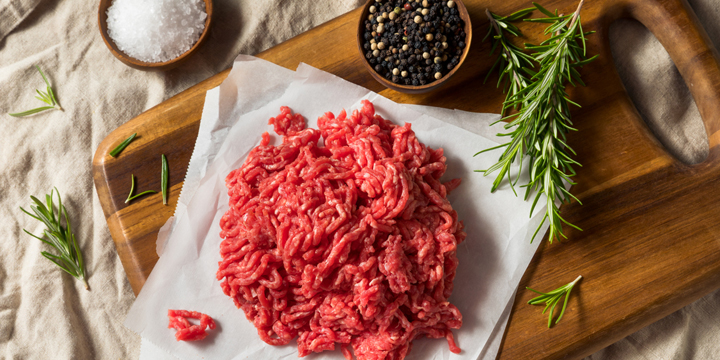
If you consider that the healthiest way to shop for groceries is to start by cruising the perimeter of the store, then you will no doubt notice that meats and poultry fall into this category.
Otherwise known as protein foods, this section of the grocery store contains foods that are an essential part of a healthy eating plan for people with diabetes.
Take a look at the plate method for meal planning: ¼ of your plate should be composed of high-protein foods, for example, one chicken breast or 3 to 4 ounces of pork loin.
Let’s take a look at some of the healthiest choices to consider when navigating the grocery store for meats and poultry.

Lean is best
The main consideration among foods in this group is how much fat they contain. In general, the leaner the meat or poultry, the better the choice. Meats do not contain carbohydrates, so they won’t raise your blood glucose levels. However, if you have diabetes, it’s important to look for heart-healthy protein sources that are low in saturated fat and cholesterol. That’s because people with diabetes have a higher risk for heart disease than people without diabetes. To lower heart disease risk, Diabetes Canada guidelines recommend limiting saturated fat to less than 7% of total calories consumed per day.
Watch the sodium
Sodium is another nutrient to watch out for, so it’s wise to choose fresh meats to limit sodium intake. As much as possible, avoid meats and poultry that have been breaded or processed – for example, chicken strips, pre-made burgers, meatballs, ham and sausage – as they generally contain large amounts of sodium.

Choosing poultry
Poultry, which includes chicken and turkey, is a high-quality protein. Choose white meat, as it contains less fat than dark meat, or ground turkey or chicken. As well, remember to use heart-healthy cooking methods to limit saturated fat and cholesterol intake. Remove the skin and bake, broil, grill or poach to keep these choices healthy.

Beef and other types of meat
For best choices in the meat section, go for lean cuts of beef, pork, lamb or veal: “loin,” “tenderloin,” “sirloin,” “chuck” and “round” are all words to look for on packaging. Ground meat choices should say “lean” or “extra lean,” rather than “medium” or “regular.”

The deli counter
Although you will find deli meats in another section of the grocery store, it is worth mentioning them here. Opt for the lowest fat and sodium in pre-packaged deli meats. At the counter, look for lean roast beef, chicken or turkey. Better still, instead of buying sandwich meats, try roasting extra beef or chicken and slicing it up to be used in sandwiches.

Think about portion size
Meat and poultry are valuable sources of protein, but they can also be sources of unhealthy fat and cholesterol; keep portion sizes in mind when purchasing these foods. For most people, a daily portion is approximately 6 to 8 ounces of poultry, fish or lean meat. So aim for about 3 ounces two times a day (3 ounces is roughly the size of a deck of cards).
Consider buying 4 to 5 days’ worth of meat and poultry each week. For the other days, go for fish or a meatless meal, to help limit saturated fat and cholesterol.


